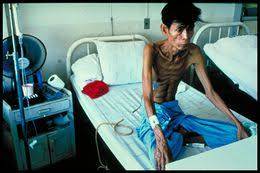Preventing Tuberculosis: Strategies, Practices, and Awareness
Introduction
Tuberculosis (TB) remains a significant global health threat despite medical advancements. It is an infectious disease caused by the bacterium Mycobacterium tuberculosis, primarily affecting the lungs but also capable of attacking other parts of the body. According to the World Health Organization (WHO), TB is one of the top 10 causes of death worldwide, leading to approximately 1.5 million deaths annually.
While TB is curable and preventable, its persistence highlights the importance of proactive measures at individual, community, and governmental levels. Prevention strategies range from vaccination and infection control measures to addressing social determinants of health. This comprehensive guide aims to explore various approaches to preventing TB and fostering a deeper understanding of the disease.
Understanding Tuberculosis
Before delving into preventive measures, it's crucial to grasp the basics of TB transmission, symptoms, and risk factors. TB spreads through the air when an infected individual coughs, sneezes, or speaks, releasing droplets containing the bacteria. People with weakened immune systems are at higher risk of developing active TB upon exposure, while those with strong immune responses may harbor the bacteria without falling ill, a condition known as latent TB infection.
Common symptoms of active TB include persistent cough, chest pain, fatigue, weight loss, fever, and night sweats. However, TB can affect various organs beyond the lungs, leading to a wide array of symptoms depending on the site of infection. Factors such as overcrowded living conditions, poor ventilation, malnutrition, HIV infection, and tobacco use contribute to the spread and severity of TB.
Preventive Measures
Preventing TB requires a multifaceted approach addressing both individual and structural factors. Here are key strategies for TB prevention:
1. Vaccination: The Bacille Calmette-Guérin (BCG) vaccine is the only licensed TB vaccine available worldwide. Administered primarily to infants in countries with high TB burdens, BCG vaccination helps prevent severe forms of TB in children, such as meningitis and disseminated disease. While BCG doesn't guarantee protection against pulmonary TB in adults, it can reduce the risk of severe TB complications.
2. Early Diagnosis and Treatment: Prompt identification and treatment of TB cases are essential for preventing transmission. Diagnostic tools like sputum smear microscopy, chest X-rays, and molecular tests aid in detecting TB infection. Once diagnosed, patients should receive appropriate anti-TB medications to cure the disease and prevent its spread.
3. Infection Control Measures: Implementing infection control practices in healthcare settings, correctional facilities, and congregate settings is crucial for preventing TB transmission. These measures include proper ventilation, use of personal protective equipment (e.g., masks), administrative controls (e.g., isolation of infectious patients), and regular screening of healthcare workers.
4. Contact Tracing: Identifying and testing individuals who have been in close contact with TB patients helps detect latent TB infection and prevent its progression to active disease. Contact tracing involves interviewing TB patients to determine potential contacts and offering them testing, treatment, or preventive therapy as needed.
5. Addressing Social Determinants of Health: Socioeconomic factors such as poverty, homelessness, overcrowded housing, and lack of access to healthcare contribute significantly to TB transmission and morbidity. Addressing these underlying determinants through poverty alleviation, housing improvements, and equitable healthcare access can reduce TB incidence and improve outcomes.
6. TB Education and Awareness: Public education campaigns play a vital role in raising awareness about TB transmission, symptoms, and prevention strategies. Targeted messaging tailored to different populations, including high-risk groups and healthcare providers, can enhance knowledge, dispel myths, and promote behavior change.
7. Nutritional Support: Malnutrition weakens the immune system, increasing susceptibility to TB infection and disease progression. Providing nutritional support, especially to high-risk populations such as children, pregnant women, and people living with HIV, can improve immune function and reduce TB incidence.
8. Tobacco Control: Tobacco smoking damages the lungs and suppresses immune function, making smokers more vulnerable to TB infection and severe disease. Tobacco control interventions, including taxation, smoking cessation programs, and public smoking bans, can help reduce TB incidence and improve treatment outcomes.
Challenges and Future Directions
Despite significant progress in TB prevention efforts, several challenges persist. Limited access to healthcare services, particularly in resource-limited settings, hinders early diagnosis and treatment initiation. Drug-resistant TB strains, including multidrug-resistant (MDR) and extensively drug-resistant (XDR) TB, pose a growing threat to global TB control efforts, requiring strengthened surveillance, diagnostics, and treatment options.
Furthermore, TB elimination requires collaboration across sectors, including health, housing, education, and social welfare. Sustainable funding, political commitment, and community engagement are essential for implementing comprehensive TB control programs and addressing underlying social determinants of health.
Innovations in TB prevention, such as new vaccines, point-of-care diagnostics, and shorter treatment regimens, offer hope for accelerating progress towards TB elimination. Additionally, leveraging digital health technologies for TB surveillance, contact tracing, and patient support can enhance the efficiency and effectiveness of TB control programs.
Conclusion
Preventing TB requires a holistic approach encompassing vaccination, early diagnosis, infection control measures, addressing social determinants of health, and promoting awareness and behavior change. By implementing evidence-based interventions at individual, community, and policy levels, we can mitigate the burden of TB and move closer to achieving global TB elimination goals. As we continue to innovate and collaborate, let us remain steadfast in our commitment to ending the scourge of tuberculosis and ensuring a healthier future for all.


